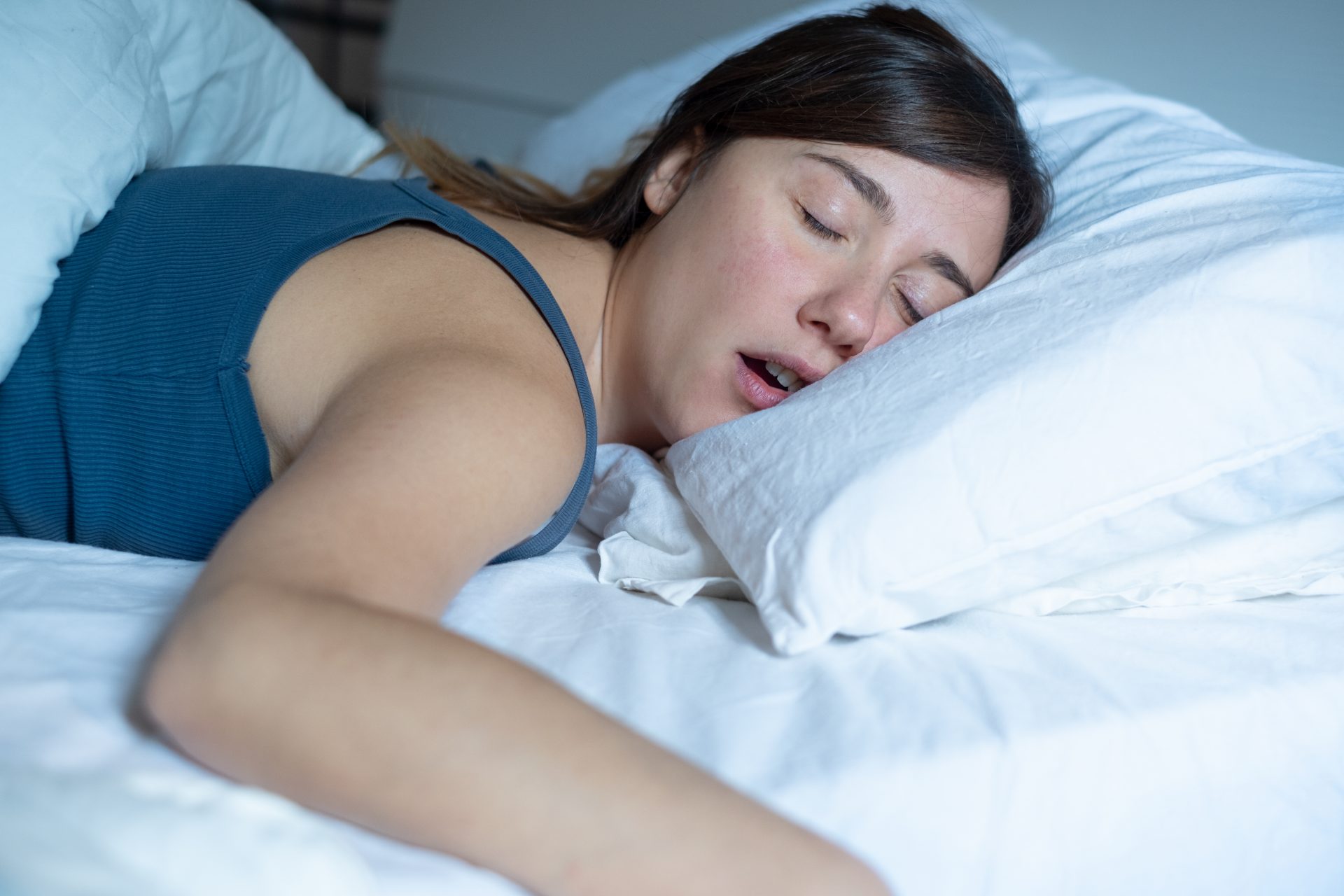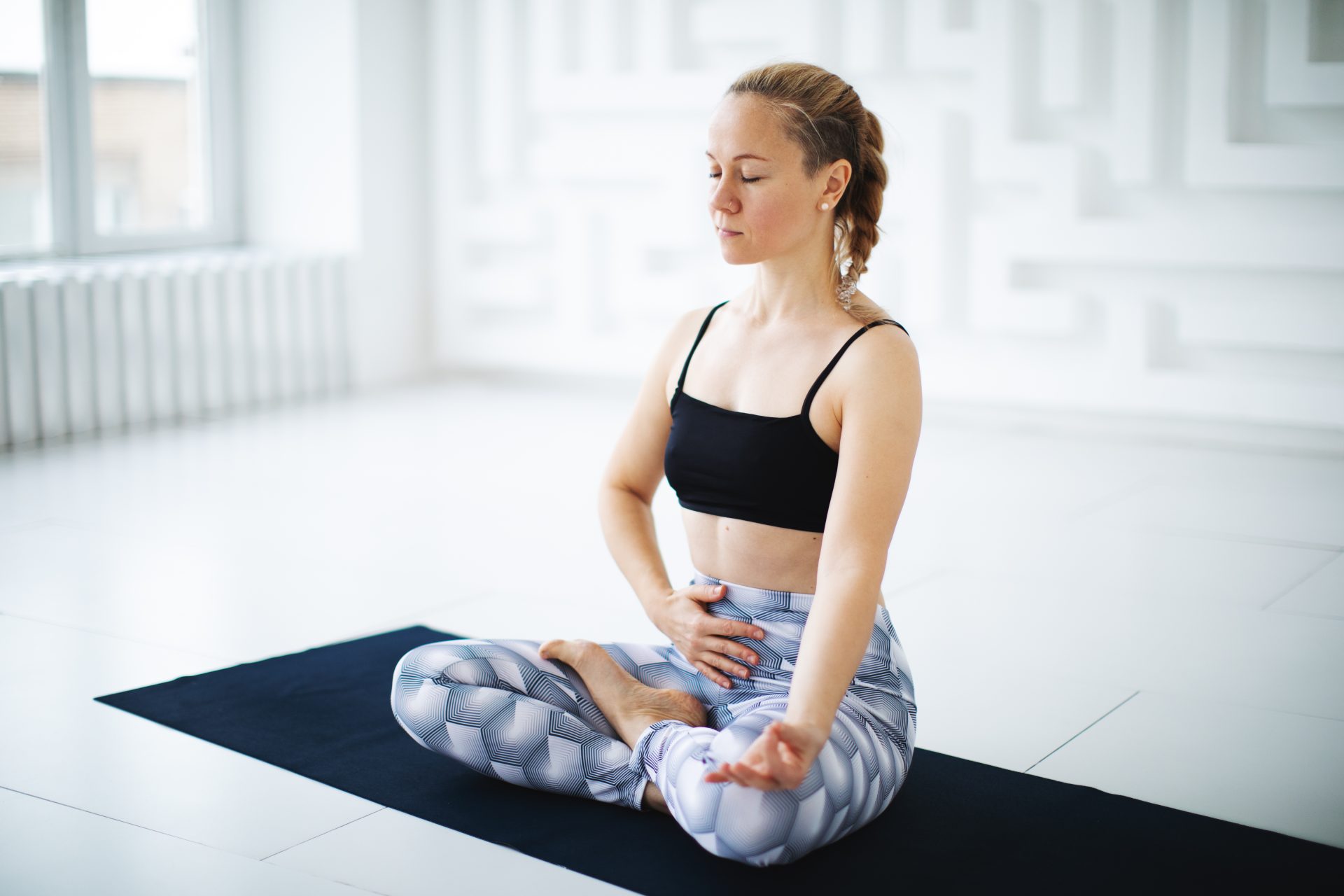Should you try to breathe through your nose when you run? How about when you’re weightlifting? While breathing isn’t complicated in everyday life, does how we in- and exhale during exercise matter? Writer Nupur Trivedi explores how much of breath science is just hot air.
Think back to your last workout. If you were running, did you take deep inhales through your mouth when the going got tough? During your last strength training session, were there moments when you forgot to breathe altogether? How we breathe during exercise can have a considerable effect on our performance; with good technique, we can efficiently supply more energy by way of oxygen to the muscles, leading us to longer and stronger workouts.
But what is the best way to breathe during exercise? According to James Nestor’s book, Breath, nasal breathing is optimum. But when Breath was released in 2020, it ignited a debate in the fitness community about whether nasal breathing really is preferable to oral breathing, or if the concept is just hot air.
Overbreathing and underperforming
Nestor’s book is centred around the premise that we have become “a culture of over-breathers” – thanks to our mouths. He suggests that oral breathing contributes to a number of health issues like sleep apnea (which is when your breathing constantly stops and starts during sleep) and insomnia, which can lead to depression and ADHD.
“Inhaling air through the mouth decreases pressure, which causes the soft tissues in the back of the mouth to become loose and flex inward, creating less space and making breathing more difficult,” Nestor wrote. “Whenever we put our heads on a pillow, gravity pulls the soft tissues in the throat and tongue down, closing off thes airway even more. After a while, our airways get conditioned to this position; snoring and sleep apnea become the new normal.” Sleep apnea lowers the level of oxygen in the blood, and when levels drop low over a prolonged period of time, Nestor says depression and memory problems soon follow.
Nestor isn’t alone in these claims; they’re echoed in another book called The Oxygen Advantage by Patrick McKeown. McKeown, like Nestor, is a strong advocate for nasal breathing. He claims that by breathing excessively during exercise – that is, through the mouth – we expel too much carbon dioxide from our bodies. This throws off the balance of oxygen and carbon dioxide needed to adequately provide energy to the muscles to keep us going for longer.
Both authors suggest that if you breathe in and out through the nose during exercise, although you’ll breathe less air (because the nose is a much smaller passage than the mouth), it will be the right amount to fuel your body during the workout. McKeown does also add that this is only applicable to submaximal intensity workouts; if you’re going for high intensity and maximum effort, you’ll need to breathe through your mouth.

Oral breathing can impact sleep and recovery
Dental surgeon and sleep specialist, Dr Aditi Desai, supports Nestor and McKeown’s claims about the links between oral breathing, sleep apnea, and depression. Dr Desai says that breathing through the nose encourages the growth of the mouth palate (the roof of your mouth). Oral breathing causes the palate to be soft, which can obstruct the nasal passage during sleep and causes sleep apnea. Nasal breathing allows the palate to sit in a way that encourages airflow during sleep.
Dr Desai suggests that oral breathing may trigger depression due to chronic disruption of the 90-minute sleep cycle; if sleep apnea is waking you up throughout the night, you won’t get enough deep sleep, and in turn, won’t get enough REM (rapid eye movement) sleep.
“If a patient doesn’t get enough REM sleep, for example, then their cognition goes; (REM sleep) is where you tend to consolidate everything you’ve learned. They lose concentration in the day, they feel groggy, or they wake up with a headache and feel tired all the time. That is not good for a patient’s quality of life,” says Dr Desai.
Oral versus nasal breathing
As for exercise performance, studies are split. One piece of research published in the International Journal of Exercise Science found that “as breathing mode (did) not affect power output or performance” during a HIIT test, people should choose how they breathe based on what feels most comfortable. Meanwhile, a 2020 review looked at 30 different studies on nasal versus oral breathing during exercise. It concluded that while nasal breathing is achievable by most people during low-intensity exercise, unless you’re well-adapted to it, you won’t be able to reach peak performance during high-intensity exercise by breathing solely through the nose. It also suggested that further research into nasal vs oral breathing in exercise is needed.
That conclusion is shared by Dr Martin Lindley, Senior Lecturer of Exercise Physiology at Loughborough University, who says that there isn’t enough evidence yet to back up Nestor or McKeown’s claims that nasal breathing is necessarily better than oral breathing. He goes on to suggest that breathing is all contextual, and “the art form of a coach in exercise is to ensure that (clients) use the correct breathing technique for the correct activity at the correct time.”
Rather than focusing on which passage we breathe through, Dr Lindley says we should instead ensure we achieve deep abdominal breathing rather than shallow chest breathing. “It’s better for us to do more abdominal breathing because it opens up larger areas of the lung… therefore you end up having a more effective and efficient respiratory mechanism.”

Breathing for strength training
While most of this research is focused on endurance activities like running or cycling, correct breathing technique is an important consideration during strength training as well.
Our natural inclination during strength training is to hold our breath through the movements because doing so can stabilize the body. But this is definitely not recommended unless you’re a highly trained elite weightlifter. Holding your breath – called the Valsalva maneuver – can lead to increased blood pressure and ruptured capillaries.
Dr Lindley says that, again, neither nasal or oral breathing is necessarily better than the other, but if you’re breathing through your nose, you’re more likely to hold your breath during the exercise. Certain moves, however, tend to force people into opening their mouths: “You’ll find most people will push through the mouth when they’re doing (strength training) because they can actively engage a pull or push.”
How to breathe during exercise
So, should we breathe through our nose instead of our mouth during exercise? The scientific consensus seems to nudge towards breathing however you feel most comfortable – the most important thing is that you remember to breathe in the first place!
That’s not to say that there aren’t tweaks we can make to our breathing regime to ensure that we’re getting the most out of every breath. We asked two coaches for their top breath tips:
1. Don’t hold your breath while weightlifting
Personal trainer and running coach Jodie Digby advises against holding your breath while lifting weights as this can lead to dizziness, increased blood pressure and poor performance. Instead, “exhale through your mouth when you are exerting yourself as you lift the weights and inhale as you lower the weights. Exhaling will allow your body to be more controlled and actively engage your muscles for a safer workout and in turn, will give you the ability to lift more.”
2. Focus on breathing from the belly
Saucony ambassador and running coach Siobhan Rootes’ top breathing tip is to try diaphragmatic breathing – breathing fully from the belly. This technique “will ensure good core activation and will also ensure you’re getting enough oxygen to all of your working muscles, thus leading to optimum performance.”
3. Try a combination of oral and nasal breathing
Both coaches agree that using a combination of nasal and oral breathing (inhaling and exhaling through both at the same time) is an effective technique for running. “Using both will keep your breathing steady and allow for maximum oxygen intake, which will help prevent fatigue and will improve your performance,” says Digby.
4. Relax!
Rootes’ top breathing technique tip – and the one we should all be most mindful of – is to simply relax: “A lot of people can overthink it, and this can lead to getting anxious over it. Be mindful of your breath and relax as much as possible; you will probably find you settle into a nice natural rhythm yourself that works best for you.”
Ready to take your running up a notch? Join our Strength Training for Runners four week plan to run faster, longer and stronger.
Source: Read Full Article
